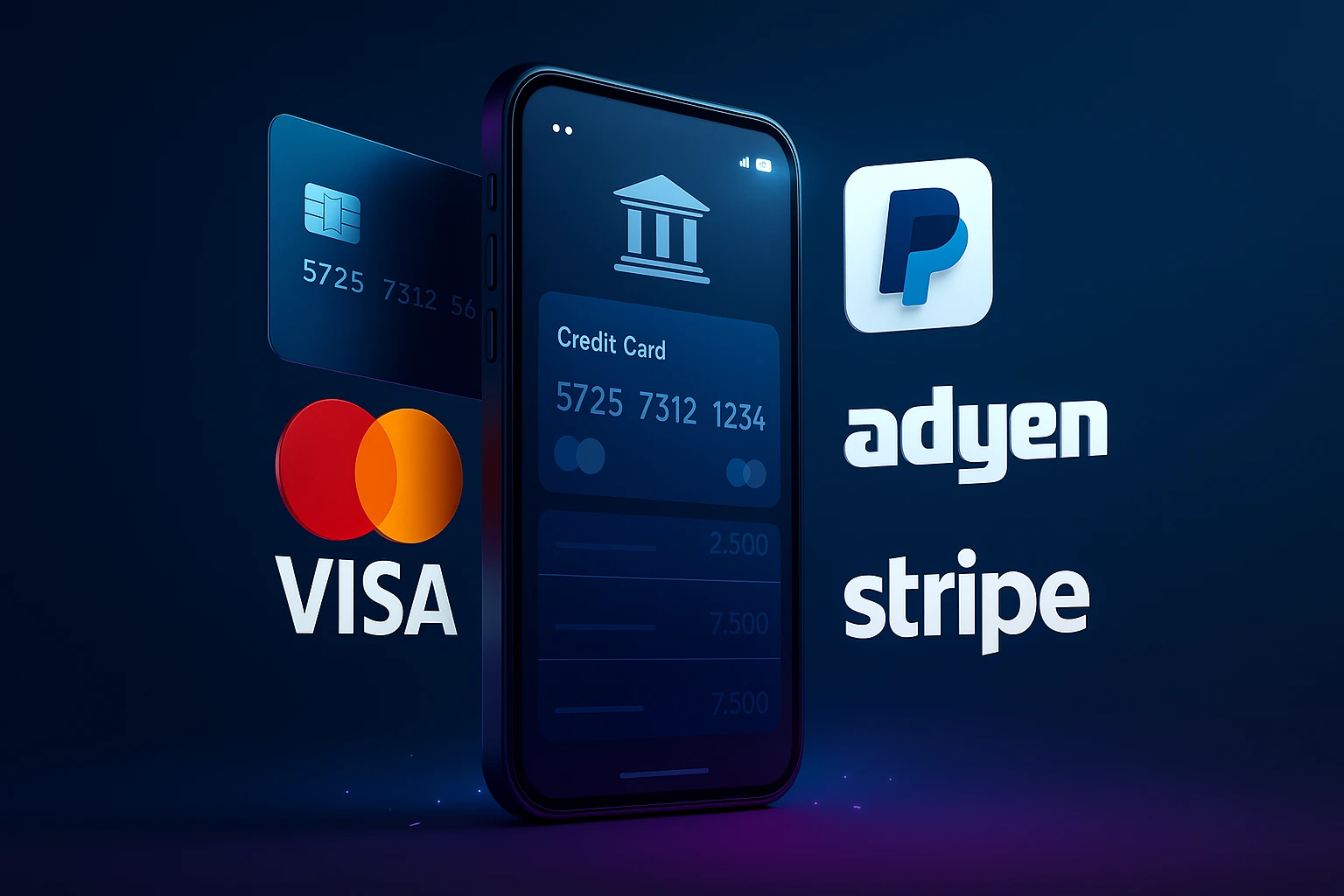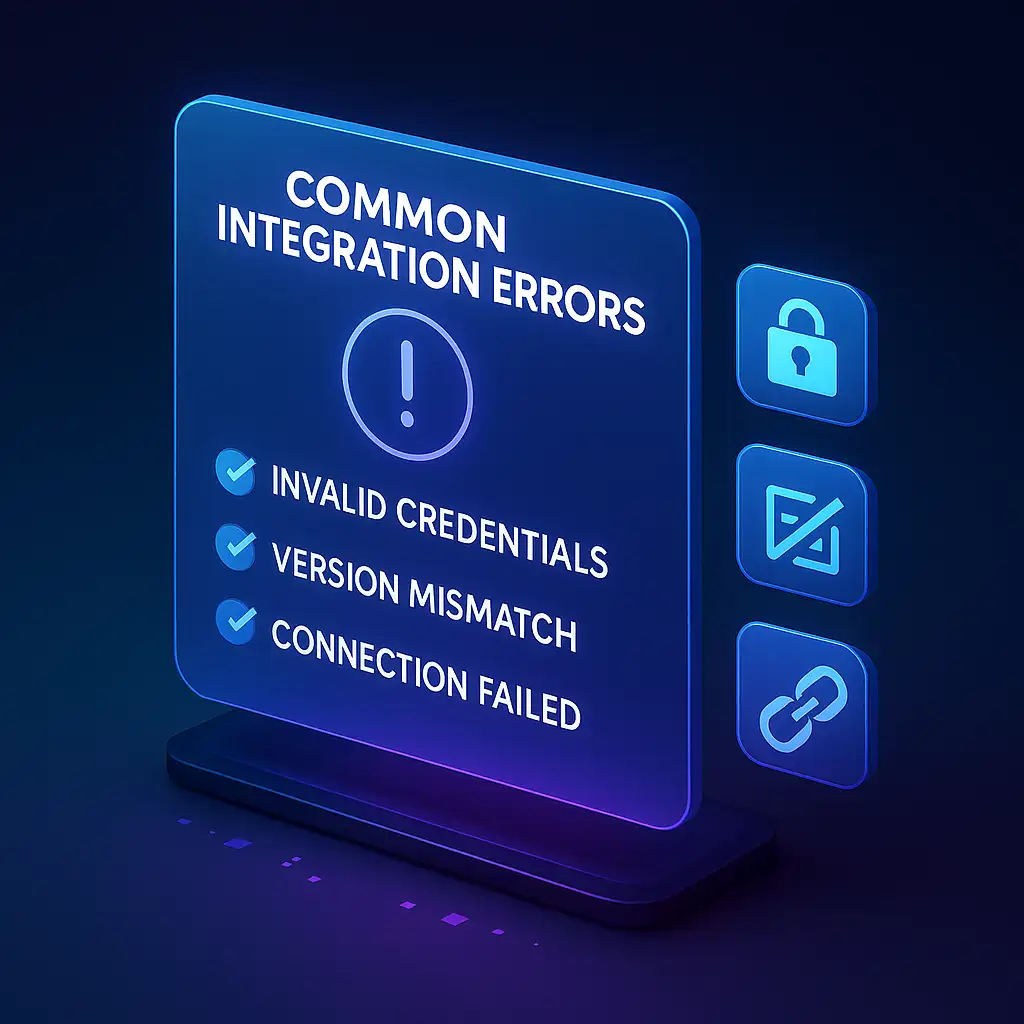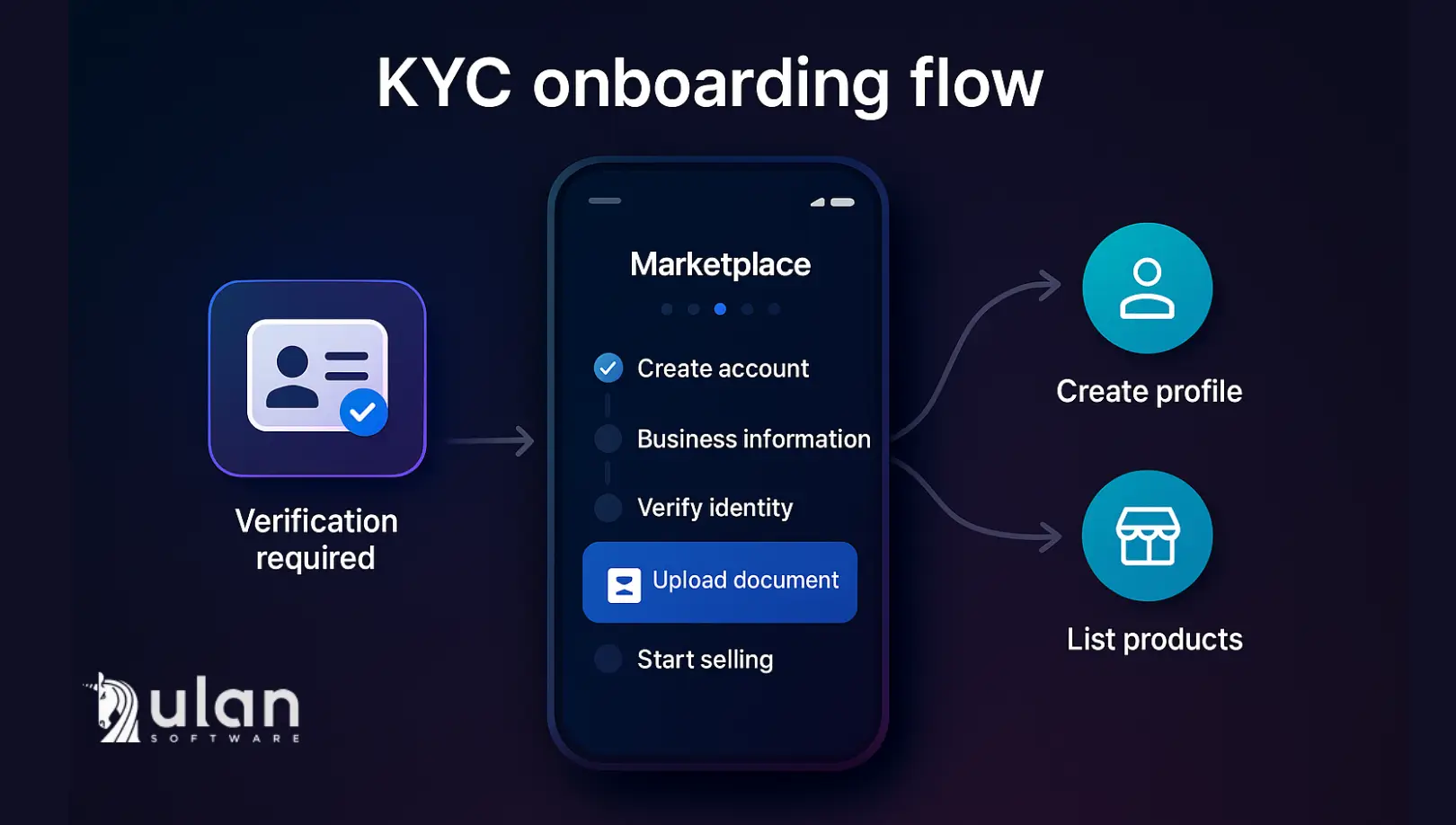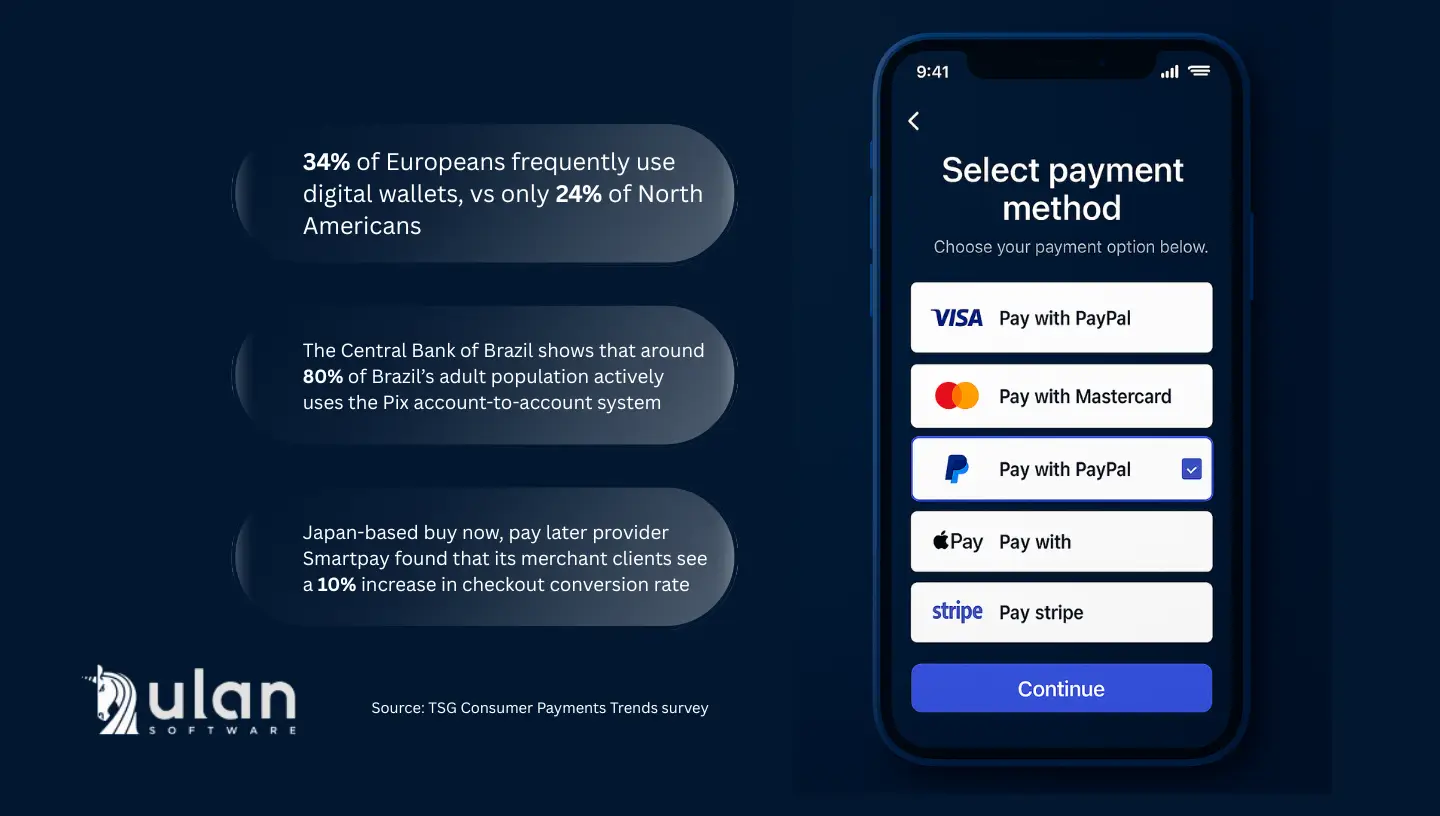Back to all Articles
Karol Andruszków
Karol is a serial entrepreneur who has successfully founded 4 startup companies. With over 11 years of experience in Banking, Financial, IT and eCommerce sector, Karol has provided expert advice to more than 500 companies across 15 countries, including Poland, the USA, the UK, and Portugal.
Marketplace Payments Integration Guide: Challenges and Solutions
Updated:
Wed, May 28
Czas czytania: 11 minut

Integration of payment gateways in an e-commerce platform can often get painful. At Ulan Software, we’ve seen firsthand how marketplaces stumble when integrating various payment solutions providers. From technical errors to compliance hurdles, even the smallest mistake can block payouts, lose transactions, or trigger suspensions.
This is the reason we've created this guide. It is our response to those common pitfalls, based on real experience.
This guide consists of 2 parts. This first one is shares our won expeirence with clietns, while the second covers common challenges. We’ll walk through common API issues, flow complications and UX traps that frustrate users.
If you're building or scaling a platform, this article will help you approach payment integrations smartly and overcome issues.
Here’s what integrating payment solutions looks like in practice.
Instead of setting up Standard accounts with direct payouts, they configured the platform to collect all funds into their own account.
The result? Stripe flagged the platform as an unauthorized payment facilitator—a role that requires specific licensing. The client received a warning that their account was at risk of being shut down.
We had to rethink the fund flow, migrate sellers to the correct account type, and rebuild the transaction routing logic from scratch.
This is the reason we've created this guide. It is our response to those common pitfalls, based on real experience.
This guide consists of 2 parts. This first one is shares our won expeirence with clietns, while the second covers common challenges. We’ll walk through common API issues, flow complications and UX traps that frustrate users.
If you're building or scaling a platform, this article will help you approach payment integrations smartly and overcome issues.
Payment Integration Lessons Learned: Our Experience
At Ulan Software, we’ve integrated payment systems for multi-vendor marketplaces more times than we can count. Each time, we’ve learned lessons that no API docs can prepare you for.Here’s what integrating payment solutions looks like in practice.
Stripe Configuration
One of our clients turned to us after running into a serious issue with Stripe Connect. Their initial integration was done without complete understanding how Stripe’s account models work.Instead of setting up Standard accounts with direct payouts, they configured the platform to collect all funds into their own account.
The result? Stripe flagged the platform as an unauthorized payment facilitator—a role that requires specific licensing. The client received a warning that their account was at risk of being shut down.
We had to rethink the fund flow, migrate sellers to the correct account type, and rebuild the transaction routing logic from scratch.
"Always align with Stripe’s compliance model. Test payout flows in a sandbox environment and, ideally, review your integration with a Stripe specialist before going live"
Wojciech Andruszków, CTO of Ulan Software

How onboarding can be a bottleneck
In one project for a UK-based B2B marketplace, onboarding a corporate seller turned into a weeks-long ordeal. Stripe Connect required ID verification for aa lot of shareholders. One was a retired stakeholder the client hadn’t contacted in years.
Despite the business being reputable, payouts were blocked. We had to walk the client through options like:
- Using Stripe Standard accounts
- Connecting an existing Stripe account
- Exploring managed onboarding through a support channel
This experience taught us that when working with larger sellers, you need to plan for KYC slowdowns.
Missing Credentials
During one of our marketplace projects, the client chose Adyen for Platforms. Everything was on track, until they tried to create test marketplace accounts. Nothing worked.After digging in, we discovered the issue: Adyen’s special “MarketPlace” API credentials hadn’t been provisioned.
These credentials aren’t included by default. We submitted a request on the client’s behalf—and waited. For two weeks, there was no response. The delay put the entire integration on hold and pushed back the delivery timeline.
Always request credentials early and, if possible, work through an Adyen account manager rather than generic support. That one small detail can save weeks.
Documentation Don't Tell You Everything
Official docs rarely cover edge cases. In one Stripe-based build, we struggled with an unclear webhook behavior. The fix? A GitHub issue from another developer who hit the same bug and shared a workaround involving a minor SDK version rollback.
In another case, we were debugging PayPal integration in OpenCart and couldn’t find the issue, until we saw a forum thread that pointed to a caching plugin conflict.
Now let's turn to the most common payment integration issues that are widely spread in the dev community.

Common Payment Integration Errors Developers Face
Integrating payment gateways like often leads to recurring API issues. Developers usually face misconfigured credentials, version mismatches, and sandbox/production confusion.
For example, using Stripe’s API with the wrong version or webhook settings can throw exceptions.
One developer reported a .NET version mismatch error on Stack Overflow.

Even established providers aren’t immune to instability. In November 2024, PayPal’s Braintree API experienced a global outage. Merchants saw HTTP 500 errors, failed transactions, and blocked withdrawals for hours. This caused revenue losses and damaged trust.
To reduce risk, marketplace platforms must design with resilience in mind:
You see, that these common pitfalls show how fragile integrations can become without safeguards.
For example, using Stripe’s API with the wrong version or webhook settings can throw exceptions.
One developer reported a .NET version mismatch error on Stack Overflow.

Even established providers aren’t immune to instability. In November 2024, PayPal’s Braintree API experienced a global outage. Merchants saw HTTP 500 errors, failed transactions, and blocked withdrawals for hours. This caused revenue losses and damaged trust.
To reduce risk, marketplace platforms must design with resilience in mind:
- Put in place robust error logging
- Track API versioning
- Set up fallback systems for downtime
- Check integration health
You see, that these common pitfalls show how fragile integrations can become without safeguards.
Managing Multi-Seller Payment Flows and Split Payouts
Marketplaces routing funds between buyers, multiple sellers, and the platform. Whether you’re selling services, products, or digital goods, multi-party payments are hard to implement correctly.
Modern APIs like Stripe Connect or PayPal Payouts offer structured flows to automate split payments and fee collection (Stripe). But one mistake can break compliance.
A developer shared their experience integrating Stripe Connect for a multi-vendor site.
Due to a misconfigured flow, customer payments landed in the platform's account, not the seller’s. The seller had to request manual payouts.
Stripe flagged this as an unauthorized payment facilitator setup and threatened account suspension. The developer had to refactor the system fast, switching to direct seller payouts to stay compliant.
This case shows the importance of using marketplace-specific APIs exactly as intended. Misuse can trigger account bans, delayed payouts, or regulatory risk.
Another pain point is holding funds until a service is delivered or a return window passes.
Many marketplaces want escrow-like behavior or delayed capture. Providers like Adyen for Platforms and Mangopay offer e-wallets and built-in escrow features. But these require extra setup—think custom webhooks, state tracking, and ledger logic.
If you miss a key step (like capturing a payment on time) funds may never transfer. Worse, sellers may lose revenue and trust.
To handle money flow safely:
Modern APIs like Stripe Connect or PayPal Payouts offer structured flows to automate split payments and fee collection (Stripe). But one mistake can break compliance.
A developer shared their experience integrating Stripe Connect for a multi-vendor site.
Due to a misconfigured flow, customer payments landed in the platform's account, not the seller’s. The seller had to request manual payouts.
Stripe flagged this as an unauthorized payment facilitator setup and threatened account suspension. The developer had to refactor the system fast, switching to direct seller payouts to stay compliant.
This case shows the importance of using marketplace-specific APIs exactly as intended. Misuse can trigger account bans, delayed payouts, or regulatory risk.
Another pain point is holding funds until a service is delivered or a return window passes.
Many marketplaces want escrow-like behavior or delayed capture. Providers like Adyen for Platforms and Mangopay offer e-wallets and built-in escrow features. But these require extra setup—think custom webhooks, state tracking, and ledger logic.
If you miss a key step (like capturing a payment on time) funds may never transfer. Worse, sellers may lose revenue and trust.
To handle money flow safely:
- Use verified split payout APIs
- Respect platform-specific rules
- Build a reliable transaction state machine
- Ensure idempotency to prevent double charges
Securing Marketplace Payments
Security is a critical concern in marketplace payment integration. Platforms face unique risks. They process high volumes and often act as intermediaries - an ideal target for fraud.
According to The Paypers, €2.4 billion in APP fraud losses in Europe come from marketplaces, often on large tech platforms.
Payment fraud and chargebacks
Stolen credit cards and fraudulent buyers cause chargebacks. One rising threat is Authorized Push Payment (APP) fraud. In this scam, users are tricked into making payments themselves.According to The Paypers, €2.4 billion in APP fraud losses in Europe come from marketplaces, often on large tech platforms.
"...APP fraud is a huge challenge. There is plenty of evidence that a very large chunk of APP fraud – EDC has estimated the size of APP fraud losses in Europe to be approximately EUR 2.4 billion – originates on marketplaces operated by some of the big tech or social media firms. Consequently, payment providers are expected to increasingly pressure tech platforms to assume greater responsibility in combating such fraud."
JMark Beresford and Volker Schloenvoigt, Directors at Edgar, Dunn & Company
In response, providers demand stronger fraud prevention. Gateways like Stripe and Adyen offer tools (e.g., Stripe Radar, Adyen’s risk engine). But integration is key. Developers should tune risk rules, handle alerts, and avoid false positives that frustrate legitimate users.
Tokenization helps here. Front-end tokenization reduces PCI DSS scope and limits exposure. Marketplaces must never handle raw card data directly.
Yet many developers forget to use client-side encryption or hosted token widgets, exposing themselves to compliance risks.
Technically, this means integrating APIs to verify identities, scan documents, or check PEP/sanctions lists.
A common misstep? Forgetting to mask card PANs in logs. That alone can breach PCI or data privacy rules.
As a payments executive noted in late 2024, the ecosystem processes $47 trillion annually. To keep up, platforms must "reimagine how payments serve both merchants and consumers". For marketplaces, that reimagination starts with secure, compliant code.
Strong Customer Authentication (SCA) and tokenization
In the EU, PSD2 mandates SCA, typically via 3D Secure (3DS). Implementing 3DS adds complexity: popups, redirects, or embedded flows. If you skip steps or misconfigure SDKs, transactions may fail.Tokenization helps here. Front-end tokenization reduces PCI DSS scope and limits exposure. Marketplaces must never handle raw card data directly.
Yet many developers forget to use client-side encryption or hosted token widgets, exposing themselves to compliance risks.
KYC and AML integration
Let's talk about Know-Your-Customer (KYC) and Anti-Money Laundering (AML) procedures. Regulators expect them, and marketplaces that skip these checks face legal trouble.Technically, this means integrating APIs to verify identities, scan documents, or check PEP/sanctions lists.
Data protection risks
Marketplaces store PII (personally identifiable information) and financial data. In this case, Developers must:- Use HTTPS
- Avoid logging sensitive values (like full card numbers or bank details)
- Purge data after verification
- Follow GDPR, CCPA, and other laws
A common misstep? Forgetting to mask card PANs in logs. That alone can breach PCI or data privacy rules.
As a payments executive noted in late 2024, the ecosystem processes $47 trillion annually. To keep up, platforms must "reimagine how payments serve both merchants and consumers". For marketplaces, that reimagination starts with secure, compliant code.
Navigating Payment Regulations
Marketplaces operate under complex legal frameworks in both Europe and the United States. This reflects how platforms onboard users, move money, and manage risk.
That rule applies across providers like Stripe, PayPal, Adyen, Mangopay. Platforms must collect:

For casual sellers, this adds friction. For large companies, it creates real blockers.
Unfortunately, there’s no easy way around it. Even trusted sellers must submit paperwork, or payouts will be frozen.
Laws like IRS 1099-K, DAC7, and AML directives demand full transparency. If you run a marketplace, you must collect and verify user information. Period.
To avoid this, most marketplaces rely on licensed intermediaries. For example Stripe Connect, Adyen for Platforms, Mangopay. These providers carry the license. The marketplace acts as their agent.
If you use fraud detection APIs or offshore support, you must check data transfer compliance under GDPR or CCPA. Legal and compliance teams should review integration flows and third-party services.
A common mistake? Forgetting that a simple log entry with unmasked card data can violate multiple laws.
By 2024, SCA is standard, but PSD3 is already in the pipeline. It may tighten rules around open banking, BigTech, and fraud detection.
Additionally, the Digital Operational Resilience Act (DORA) will soon apply to large fintechs and platforms. For you this means:
In 2025, marketplace operators must treat operational resilience as seriously as financial compliance.
If you log card numbers in dev mode, store raw CVVs, or handle payments on your server, you enter PCI scope. That means:
The safest path? Use provider-hosted solutions. Never process raw card data. And never assume your logs are clean unless you check.
Many providers now advertise compliance as a feature. For example, Tipalti, Mangopay, and Adyen highlight automated onboarding and fraud detection.
But even with great tools, the responsibility is yours. Communicate clearly with your sellers. Guide them through the process.
For teams that want to skip months of custom development and get to market faster, a white-label marketplace platform can reduce compliance risk and accelerate go-live
KYC, KYB, and AML Obligations
Users must verify their identity, to send or receive money. That’s the law.That rule applies across providers like Stripe, PayPal, Adyen, Mangopay. Platforms must collect:
- Full legal names
- Date of birth and government ID
- Business ownership details (for KYB)
- Bank account information

For casual sellers, this adds friction. For large companies, it creates real blockers.
Unfortunately, there’s no easy way around it. Even trusted sellers must submit paperwork, or payouts will be frozen.
Laws like IRS 1099-K, DAC7, and AML directives demand full transparency. If you run a marketplace, you must collect and verify user information. Period.
Licensing and Money Transmission
In the US, transmitting funds may classify your platform as a Money Services Business (MSB). That requires licenses across many states under FinCEN rules. In the EU, PSD2 mandates licenses for platforms executing payments.To avoid this, most marketplaces rely on licensed intermediaries. For example Stripe Connect, Adyen for Platforms, Mangopay. These providers carry the license. The marketplace acts as their agent.
Data Privacy: GDPR, CCPA, and Beyond
Marketplaces process sensitive data: names, addresses, payment details. That is why you must:- Encrypt all traffic (HTTPS)
- Avoid logging raw payment data
- Limit storage to PCI DSS-compliant tokens
- Respect data minimization and retention rules
If you use fraud detection APIs or offshore support, you must check data transfer compliance under GDPR or CCPA. Legal and compliance teams should review integration flows and third-party services.
A common mistake? Forgetting that a simple log entry with unmasked card data can violate multiple laws.
PSD2, PSD3, and Digital Resilience
PSD2 changed how European marketplaces handle payments. Since 2021, Strong Customer Authentication (SCA) is mandatory. Most platforms now use 3D Secure 2, which adds friction at checkout. If not implemented cleanly, it leads to abandoned carts.By 2024, SCA is standard, but PSD3 is already in the pipeline. It may tighten rules around open banking, BigTech, and fraud detection.
Additionally, the Digital Operational Resilience Act (DORA) will soon apply to large fintechs and platforms. For you this means:
- Annual penetration testing
- Detailed incident reporting
- Stronger ICT risk controls
In 2025, marketplace operators must treat operational resilience as seriously as financial compliance.
PCI DSS and Card Security
Most platforms avoid PCI DSS scope by using tokenized fields (e.g., Stripe Elements or Braintree Drop-In). But mistakes happen.If you log card numbers in dev mode, store raw CVVs, or handle payments on your server, you enter PCI scope. That means:
- Network scans
- Security questionnaires
- Risk of audits
The safest path? Use provider-hosted solutions. Never process raw card data. And never assume your logs are clean unless you check.
Many providers now advertise compliance as a feature. For example, Tipalti, Mangopay, and Adyen highlight automated onboarding and fraud detection.
But even with great tools, the responsibility is yours. Communicate clearly with your sellers. Guide them through the process.
For teams that want to skip months of custom development and get to market faster, a white-label marketplace platform can reduce compliance risk and accelerate go-live
UX Issues Around Payment Gateways
Even with great technology and compliance, poor payment UX can break a marketplace. In 2025, platforms are focusing on reducing friction. Especially during seller onboarding and buyer checkout.
Many marketplaces now use:
Local expectations play crucial role here. A 2024 TSG study found:
-> 34% of Europeans use digital wallets often
-> In the US, only 24% do
That means EU marketplaces must support wallets like PayPal, Apple Pay, Google Pay, or local options. American platforms may focus on card payments or Buy Now, Pay Later (BNPL) instead.
Offering BNPL boost sales. Stripe saw a 10% lift in conversion when BNPL was added.
Developers usually face the challenge of offering many methods while keeping the UI simple. Unified checkouts like Stripe's Payment Element solve this by presenting multiple methods in one smart widget. This results in a 10.5% revenue increase for upgraded merchants.

Marketplaces must ensure mobile compatibility across all integrations, especially for authentication steps.
Payments are just one layer of marketplace architecture. If you're exploring how to embed financial features or expand your service model, we recommend diving into:
👉 9 real-world examples of embedded finance
and
👉 full guide to service marketplace development
Seller Onboarding & KYC UX
Collecting KYC information is mandatory, but the way it’s collected impacts conversion. Long forms, document uploads, or vague error messages scare off new sellers.Many marketplaces now use:
- Progressive onboarding (asking for details only when payouts are triggered)
- Integrated ID verification (camera-based uploads via phone)
Buyer Checkout Experience
Common friction at checkout points include:- Forced account creation
- Redirects to banking sites or PayPal
- Lack of preferred payment methods
Local expectations play crucial role here. A 2024 TSG study found:
-> 34% of Europeans use digital wallets often
-> In the US, only 24% do
That means EU marketplaces must support wallets like PayPal, Apple Pay, Google Pay, or local options. American platforms may focus on card payments or Buy Now, Pay Later (BNPL) instead.
Offering BNPL boost sales. Stripe saw a 10% lift in conversion when BNPL was added.
Developers usually face the challenge of offering many methods while keeping the UI simple. Unified checkouts like Stripe's Payment Element solve this by presenting multiple methods in one smart widget. This results in a 10.5% revenue increase for upgraded merchants.

Mobile Optimization
Mobile-first is the default. If payments aren’t optimized for phones, users leave. Key elements include:- One-tap wallets like Apple Pay and Google Pay
- In-app 3D Secure flows (to prevent breaking the purchase flow)
- Responsive, testable checkout layouts
Marketplaces must ensure mobile compatibility across all integrations, especially for authentication steps.
Payments are just one layer of marketplace architecture. If you're exploring how to embed financial features or expand your service model, we recommend diving into:
👉 9 real-world examples of embedded finance
and
👉 full guide to service marketplace development
Final Thoughts
The most successful marketplace platforms treat payment integration as a product experience, not just a backend process. They collaborate across engineering, product, and compliance teams to ensure the payment flow is:
At Ulan Software, we help companies plan, build, and launch global platforms through our online marketplace development services, from back-end architecture to seamless payment integration.
If you're building or scaling a multi-vendor marketplace and want to get payments right from day one, let’s talk.
- Technically robust
- Legally sound
- Transparent to sellers
- Seamless for buyers
At Ulan Software, we help companies plan, build, and launch global platforms through our online marketplace development services, from back-end architecture to seamless payment integration.
If you're building or scaling a multi-vendor marketplace and want to get payments right from day one, let’s talk.
Karol Andruszków
Karol is a serial entrepreneur who has successfully founded 4 startup companies. With over 11 years of experience in Banking, Financial, IT and eCommerce sector, Karol has provided expert advice to more than 500 companies across 15 countries, including Poland, the USA, the UK, and Portugal.
Table of Contents:
Recommended Articles
Tue, Nov 25
How to Choose the Best Marketplace Software?
Learn how to choose the best marketplace software with a clear, step-by-step guide. Compare models, features, scale, cost, and vendor fit to make a confident choice.
Thu, Nov 20
Top 15 UX Tips to Improve Conversion Rates in Travel Booking
Improve travel booking flow conversion with 15 proven UX tips. Learn how mobile design, pricing clarity, speed, and smart flows reduce friction and lift bookings.
Mon, Nov 17
What to Look for in Enterprise Booking Software?
Learn what to look for in enterprise booking software: key features, integrations, security, and data to guide your 2025 selection.


